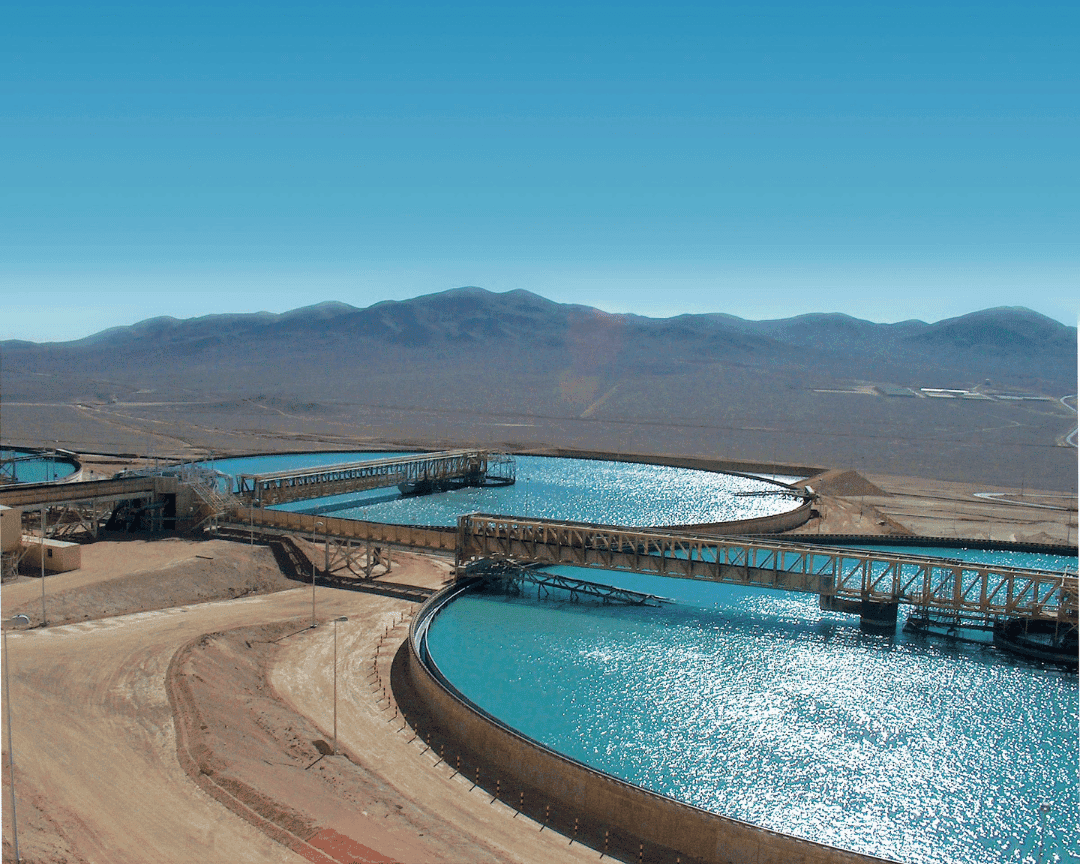There are numerous advantages including: lower maintenance costs and higher performance; easy operation and maintenance accessibility; reliability of a proven, high-performance design; availability of process control and DCS communication; and a range of reliable dewatering equipment, including vacuum filters, pressure filters and centrifuges.
Filtered tailings technology
Our filtered tailings solution uses high-rate or high-density thickener followed by a variety of filters (resulting in 75 to 90%+ solids) to recover water in tailings prior to disposal. The result is higher water reclamation and lower water costs, a minimised tailings management facility (TMF) with a footprint approximately 50% smaller than a conventional TSF and a reduction in closure costs at end of mine life (progressive closure is possible). This makes licence to operate easier to attain.
Even more stable and suited to fast reclamation, is our co-mingling solution, named EcoTails®. EcoTails blends “fast filtered” tailings with waste rock in transit and creates a geotechnically stable product called GeoWaste™. When blended properly, GeoWaste is easy to convey and has a high strength when stacked. EcoTails and GeoWaste make dry stacking possible for large scale mining, even in areas with high seismic activity.
EcoTails carries all the advantages of filtered tailings as well as added benefits such as reduced acid rock drainage (ARD) potential, an even smaller total waste footprint and improved physical stability. Meanwhile, unmanned and optimised operation of dry stacking equipment lowers cost per tonne, reducing equipment wear, saving energy and increasing safety.
While these dry stack/filtered solutions offer the most in terms of lowing impact, risks and costs, we also know that every mine site has unique considerations and conditions. That’s why we work closely with customers to improve safety, reduce risk and minimise the environmental impact of tailings, across varied mining environments and regional conditions. We evaluate the effect of grind size and ultra-fines on tailings dewatering; tailing dewatering and conveyability; and, the total cost of ownership economics related to thickening versus vacuum filtration versus pressure filtration.
Our focus is on finding innovative techniques that minimise the risks, make use of economies of scale and minimise environmental impact.
In sand dam solutions, for instance, we provide technologies such as KREBS® gMAX® cyclones, the SmartCyclone® monitoring and control solution and the KREBS® slurryMAX® pump range that provide benefits such as energy savings, elimination of gland water requirements, increased production capacity and longer wear life amongst others.
When it comes to thickened tailings, our solution uses a high-rate or high-density thickener, resulting in 50 to 65% solids, to recover water in tailings prior to disposal. With this option, you will recover higher volumes of water and reduce losses to seepage and evaporation.
Derived from Dorr-Oliver® and EIMCO® technologies, our thickening equipment includes bridge-supported and column-supported designs to suit both smaller and larger throughput mines. High-rate thickeners are designed to provide roughly 12 times the throughput of conventional machines of similar size. This means: maximum capacity, improved control, increased underflow density and lower flocculant dose.
We also provide paste backfill for underground mines. In this case, the tailings are dewatered and pumped below ground. The paste is often mixed with a binder, such as cement, to provide support to prevent heading collapse and subsidence issues. Any excess paste tailings can be transported to the surface tailings storage facility.
This solution allows for minimal surface disturbance with a reduced footprint, low dust generation, next to no visual impact and a reduced risk of surface water and groundwater contamination.
